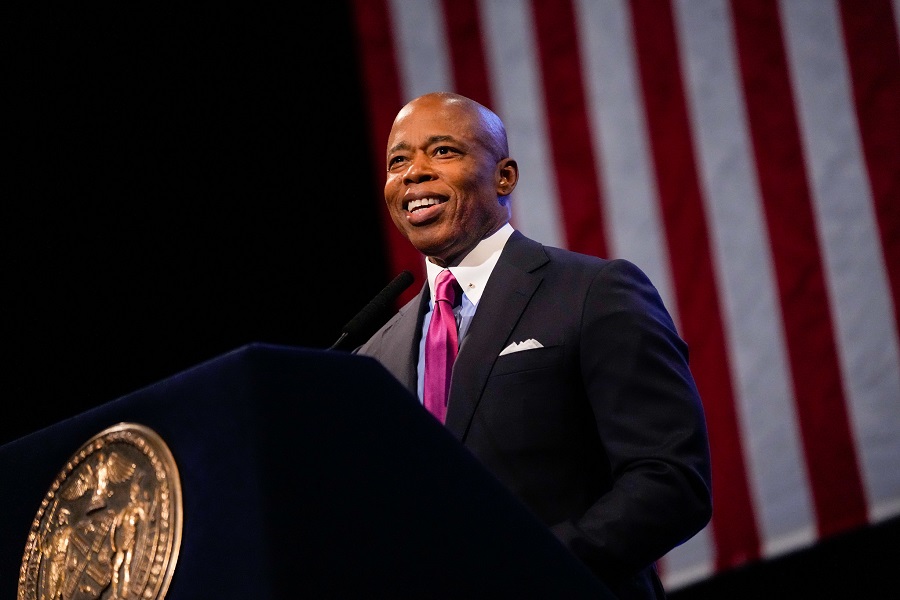
New York Attorney General Letitia James issued guidance to local Boards of Election (BOEs) and law enforcement agencies from Harlem to Hudson.
The guidance is on how to combat voter intimidation and ensure voters’ rights are protected leading into the November 2022 general election. Under state and federal law, it is illegal for anyone to intimidate, threaten, or coerce voters in an effort to interfere with their right to vote.
Attorney General James also sent guidance to local BOEs on managing long lines and supporting voters with disabilities at high-traffic poll sites. As more than 20 percent of New Yorkers have a disability, it is especially crucial for BOEs and poll workers to ensure voting is accessible for all.
“Voting is safe and protected in New York state. Throughout Early Voting and on Election Day, New Yorkers should be able to proudly cast their ballots without fear of intimidation, unmanageable lines, or inaccessibility,” said Attorney General James. “Voting is a fundamental right and integral to the sanctity of our democracy, and I urge anyone who encounters obstacles to contact my office. I will not allow anyone to threaten the right to vote in New York state.”
As discussed in more detail in the guidance provided by the Office of the Attorney General (OAG), the following conduct potentially constitutes illegal voter intimidation:
- Individuals or groups patrolling outside of polling places and trying to scare people out of the voting line;
- Civilians dressing as law enforcement officers and harassing voters at poll sites;
- Poll watchers inside a polling place engaging in aggressive behavior or challenging large groups of voters, leading to long lines and creating false fears that people may be illegally voting;
- Poll watchers standing in the vicinity of privacy booths, standing in unauthorized areas, videotaping and/or photographing voters within the polling place, following or harassing voters in the polling place;
- Individuals spreading false rumors or making false statements that there are negative consequences to voting; and
- Individuals or groups displaying weapons or military uniforms or other military paraphernalia outside of polling locations.
Attorney General James also noted that federal law has determined that voter intimidation includes threatening violence against voters, threatening economic boycotts due to voting, and following voters to poll sites and speaking loudly about prosecuting them for illegal voting. Additionally, publicly disseminating voters’ names and addresses, or “doxing,” to vilify those individuals or conducting patterns of baseless arrests and prosecutions in the vicinity of voter registration meetings are voter intimidation actions.
The OAG also reminds New Yorkers that the following actions are prohibited under New York state law:
- Requiring an individual to show photo ID to vote;
- State and local employees interfering with or affecting the election;
- Open carry of handguns, or the possession of machine guns and loaded or unloaded assault weapons, as well as the use of firearms or other dangerous instruments to intimidate or harass;
- A member of the United States armed forces preventing, or attempting to prevent, a voter from fully exercising their voting rights through force, threat, intimidation, or advice;
- Groups of people organizing as private militias without permission from the state; and
- Invading the privacy of a voting booth used by a voter.
Additionally, the guidance emphasizes that media and press are allowed to film or take pictures of individuals in the polling place if they have written authorization from BOE and permission from each individual.
New York law does not require the same accommodations for every voter with a disability, so OAG recommends BOEs instruct poll workers to determine the appropriate accommodations on an individualized basis.
Nevertheless, there are a number of best practices BOEs should employ when assisting voters with disabilities and implementing reasonable accommodations, including but not limited to:
- Instructing poll workers to monitor lines and announce themselves as someone who can provide an accommodation to voters with disabilities;
- Providing clear and language-accessible signage throughout the polling location to inform voters with disabilities of the availability of accommodations;
- Providing voters with disabilities with chairs if they are unable to stand for long periods of time and assisting such voters as necessary as the line moves forward;
- Ensuring access to restrooms;
- Implementing “placeholders” to wait in line in lieu of voters with disabilities;
- Maintaining separate, expedited lines for voters with disabilities; or
- Escorting voters with disabilities to the front of the line.
To reduce crowding and long lines for the benefit of all voters, BOEs should consider providing additional staff and voter stations at poll sites and extending early voting hours where possible.
New Yorkers who observe any illegal conduct are encouraged to contact OAG’s Election Protection Hotline by calling (866) 390-2992, submitting complaints online, or emailing election.hotline@ag.ny.gov. Any emergencies or incidents involving potentially dangerous conduct should be reported to local law enforcement immediately by calling 911.
The OAG will receive and respond to election complaints relating to any of the statutes that OAG enforces.
The OAG’s Election Day Hotline is being coordinated and led by Assistant Attorneys General Nancy Trasande and Lindsay McKenzie, Research Analyst Miriam Li, and Deputy Bureau Chief Travis England of the Civil Rights Bureau.
The Civil Rights Bureau is a part of the Division for Social Justice, which is led by Chief Deputy Attorney General Meghan Faux and overseen by First Deputy Attorney General Jennifer Levy.
Photo credit: “A group of African American children gather around a sign and booth to register voters. Early 1960s,” Wikipedia. Illustration by Tisdale Studio.
Become a Harlem Insider!
By submitting this form, you are consenting to receive marketing emails from: . You can revoke your consent to receive emails at any time by using the SafeUnsubscribe® link, found at the bottom of every email. Emails are serviced by Constant Contact








